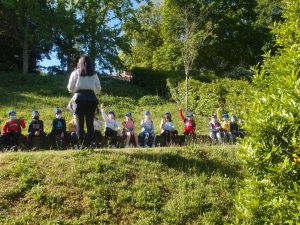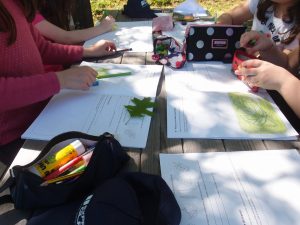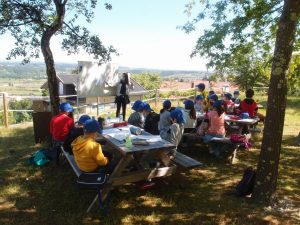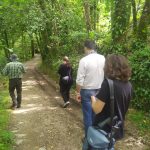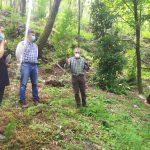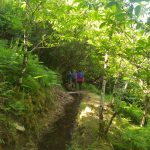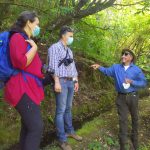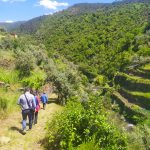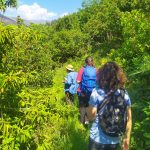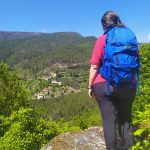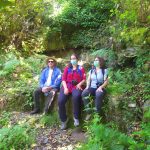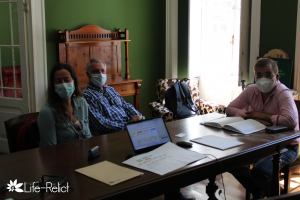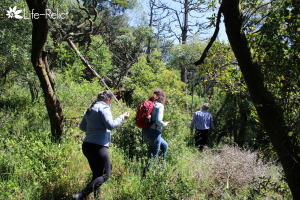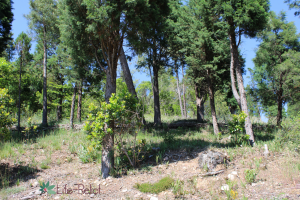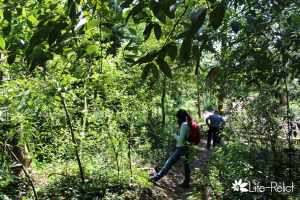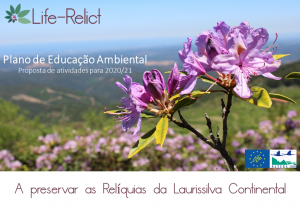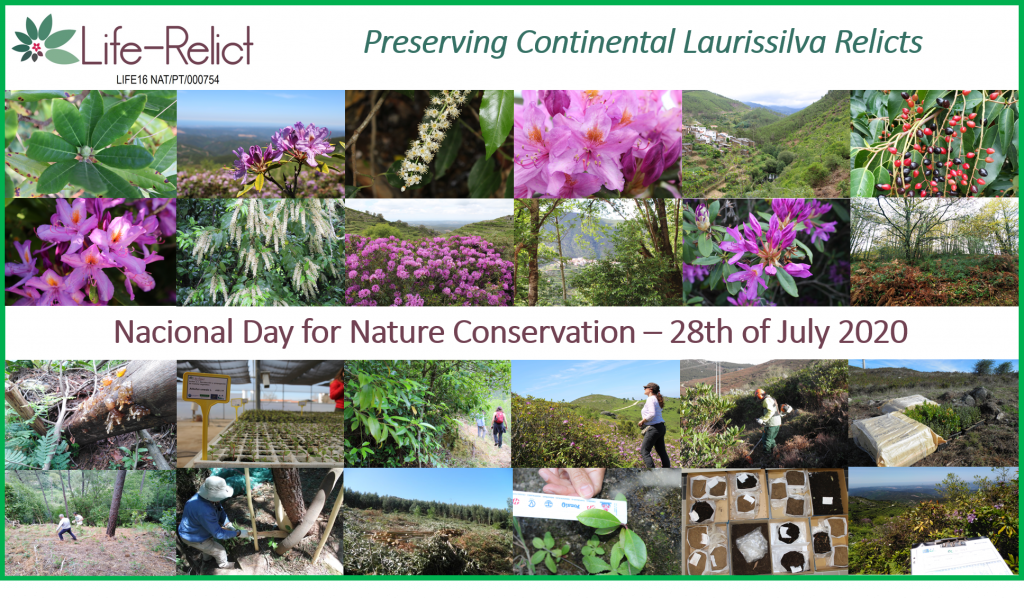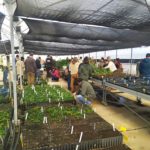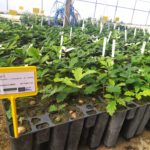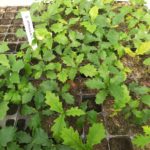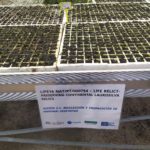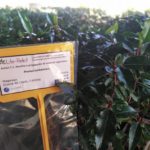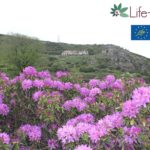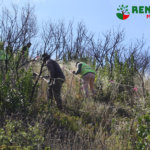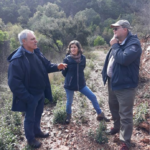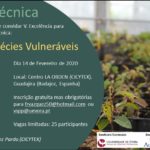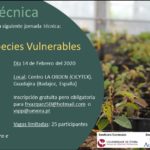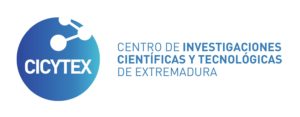From the tree to the forest: Environmental education programme ongoing in Seia
“From the tree to the forest” is the environmental education project that CISE is developing with students from the Seia School Center, within the scope of Life-Relict project.
In the last weeks, four classes from the third and fourth year of school held the first activity “How am I and who am I”. In addition to learning that the portuguese laurel is a relic plant that is still possible to observe in some places in the municipality of Seia, they discovered in the green park of CISE, how the trees are constituted and how to identify some species.
NEEMO visits Life-Relict intervention areas
On the 27th and 28th of May, we received a NEEMO visit, through the monitor Sara Barceló, who came to see on the spot the interventions carried out by the Life-Relict team, more precisely, in Mata da Margaraça and in the surrounding areas of Cabeça and Casal do Rei villages.
Click on images to enlarge
Life-Relict visits Mata Nacional do Bussaco
On May 17th, the team of Life-Relict visited the Bussaco National Forest and the intervention areas of the Life Bright Project. Here, it was possible to learn about the management actions carried out to control of invasive alien species and the recovery of the habitats that this iconic National Forest hosts.
During the guided tour, it was possible to observe, in loco, the results of the efforts to control invasive alien species, such as the blue wattle (Acacia spp.), also present in the intervention areas of Life-Relict Project (i.e. surrounding areas of Cabeça village in Seia, Estrela Mountain).
Invasive alien species are those species that, not being native to a specific territory, proliferate aggressively there, affecting the characteristic biodiversity of that place. For example, acacias, a very invasive plants from Australian, compete with native species for the same resources (water, nutrients and space). Unfortunately, in Portugal, acacias are gaining more and more grounds, in detriment of our natural values. For this reason, biological invasions are now considered one of the main threats to biodiversity conservation. Thus, these two LIFE projects have in common the fight against invasive alien species.
The Life BRIGHT project – whose acronym is the initials of “Bussaco´s Recovery from Invasions Generating Habitat Threats”, started in 2011 and lasted for 7 years. The main purpose was to test, demonstrate and disseminate a set of conservation practices for the natural heritage existing in Bussaco National Forest, such as the conservation and enhancement of the relic habitat here present and, control and eradication of invasive exotic flora that threatens the habitat and other species as well as promote active involvement of diverse audiences, entities and civil society. This project was coordinated by the Mata do Buçaco IP Foundation and had the partnership of the Municipality of Mealhada and the University of Aveiro.
For more info, please visit: http://www.fmb.pt/bright/
The Environmental Education Plan is now available
In order to fulfill the 5th objective of the Life-Relict, that is, to increase the motivation, skills and cooperation of the local population and the regional authorities for the preservation of the Continental Laurissilva Relicts, several dissemination actions are being developed. It include the dissemination of the Project to the general public; communication and promotion of nature-based tourism; promoting environmental education actions; technical and scientific dissemination activities; networking with other projects and replication efforts.
In this way, the Life-Relict Project has a specific action for schools, through which it intends to:
- Cooperate with the school to fulfill its Educational Project, enriching the learning process, and without any financial burden for the educational community.
- Streamline environmental education activities considering the areas of competence established in the Student Profile on Leaving Mandatory Schooling and the Environmental Education Framework for Sustainability.
- To raise the awareness of the educational community about the importance of nature conservation in general and the preservation of the Continental Laurissilva Relicts in particular.
For more information about the Environmental Education Plan, please contact the Project team.
The Plan is available in Portuguese for consultation HERE.
National Day for Nature Conservation
The National Day for Nature Conservation was instituted by the Portuguese Government in July 28th, 1998, through Resolution of the Council of Ministers no. 73/98, which aims to create an annual moment of special reflection on issues related to nature, whether in Portugal or in the world. It is also a day of recognition of the role of society and the associative movement in favor of defending natural values, the basis of survival and all human activities.
This day aims to raise awareness and inform society about the state of nature and sustainable use of biological resources. Indeed, ecological imbalances, climate change, degradation of habitat and ecosystems, as well as the loss of biodiversity, jeopardize the sustainable development of Portugal, so the involvement of all citizens in its preservation is urgent and essential.
Survey about Life-Relict Website
We kindly ask for your collaboration in this short survey about the Life-Relict Website and, if you please, disseminate it throughout your contacts. It aims to understand the scope of the Project’ communication and dissemination actions. Coordinated by the University of Évora, this is a project that aims to substantially improve the conservation status of the Portuguese Laurel and Pontic Rhododendron in Portugal.
This very small survey will also provide us with an understanding of the Internet contribution to raise awareness for the importance of this habitat conservation as well as assess users’ opinions about the Site and the relevance of its content.
The questionnaire is short, anonymous, lasts less than 2 minutes and can be accessed HERE
Thank you in advance for your cooperation. Kind regards.
3rd Technical Workshop on Propagation of Vulnerable Species at CICYTEX
On February 14 (2020), the 3rd technical workshop was held under Life-Relict, this time about the propagation of vulnerable species. The event took place at the Instituto de Investigaciones Agrarias Finca La Orden-Valdesequera, in Badajoz. Here, the participants had the opportunity to get to know more closely the work that the partner CICYTEX has been developing under Action C1 – Collection and Propagation of Vegetable Material. This action is the responsibility of CICYTEX and intends to collect and propagate the plant material necessary to increase and improve the conservation status of the target habitat and associated habitats, in the Project’s intervention areas.
The opening session was attended by the Director General of CICYTEX, Carmen González Ramos, with the coordinator of Life-Relict, Prof. Dr. Carlos Pinto Gomes from the University of Évora and with the Research Coordinator of CICYTEX, responsible for the working group for the propagation of vulnerable Life-Relict species, Francisco Vasquez Pardo. There followed the presentations on the work developed at CICYTEX within the scope of this Project and some of the results already achieved were disclosed.
Then, about 48 participants went to see the facilities where everything happens, namely, the laboratory where the seeds are cleaned and the first germination tests of the vulnerable species that are the target of Life-Relict are carried out. The visit to the greenhouses took place immediately afterwards, where it is possible to observe the development of the Rhododendron cuttings (Rhododendron ponticum subsp. baeticum), the Portuguese Laurel (Prunus lusitanica) and many other species, including Quercus.
Click on the images to enlarge
1 and 2 – Opening session with Francisco Vasquez Pardo (CICYTEX), Carmen González Ramos (CICYTEX) and Prof. Carlos Pinto Gomes (UÉvora) – from left to right
3 – David Alonzo explains the spread of Portuguese Laurel and Rhododendron, target species of Life-Relict
4 – Francisco Vasquez Pardo explains the spread of the various species of Quercus
5 – Bench with several trays where the seeds are for cleaning
6 – Explanation of how to clean the seeds of vulnerable species
7 – Seeds of Rhododendron (Rhododendron ponticum subsp. baeticum)
8 – Seeds of Philyrea angustifolia
9 – Seeds of Ramnus alaternus
10 – Clean seeds of Philyrea angustifolia
11 – Participants visiting one of the various CICYTEX greenhouses
12 – Development of Rhododendron cuttings (Rhododendron ponticum subsp. baeticum)
13 – Participants visiting another of the various CICYTEX greenhouses
14 – Development of the germination of the Portuguese Laurel (Prunus lusitanica)
15 – Development of germination of Ramnus alaternus
16, 17 and 18 – Development of germination of Arbutus unedo
19 and 20 – Development of Quercus x marianica
21 and 22 – Participants visiting CICYTEX greenhouses
23 and 24 – Development of the germination of monchique oak (Quercus canariensis)
25 – Participants visiting CICYTEX greenhouses
26 – Development of germination of black oak (Quercus pyrenaica)
27 – Identification of trays as products of Action C1 of the Life-Relict project
28, 29 and 30 – Development of the germination of the Portuguese Laurel (Prunus lusitanica)
31 – Group photo
To access and download the presentations, please visit the communications page.
To view a short video prepared by CICYTEX during this Technical Workshop, please use this link.
University of Évora and GEOTA join efforts to restore natural Habitats in the Monchique
The University of Évora and the Study Group on Spatial Planning and Environment (GEOTA in Portuguese) signed a mutual collaboration protocol at the beginning of January (2020) with the objective of creating synergies between the conservation projects that each entity coordinates in Monchique.
In order to conserve one of the rarest natural habitats in Europe and one of the most unique in Monchique, the University of Évora coordinates Life-Relict. This project has as main objective the conservation of the arboreal communities of lauroid species (priority habitat for conservation listed in Annex I of the Habitats Directive with code 5230 *). It is here that the witness plants of the Laurissilva forests that lived in the Iberian Peninsula in past geological times, when the dominant climate was of subtropical. In this situation are the rare Rhododendron, dominated by the imposing shrubs of Rhododendron ponticum subsp. baeticum, a scarce and fragmented floristic species in the western areas of the Iberian Peninsula. Among the most varied concrete conservation actions carried out by Life-Relict, we highlight those that intend to benefit the mature stages of ecological succession, including the potential forests of Monchique. As it is intended to increase the area of autochthonous forest and, therefore, increase the resilience and robustness of this priority habitat, in view of the exposure of the most significant threats, as is the case of fires, inadequate forestry interventions, propagation of invasive alien species , climate change, among others.
Simultaneously, GEOTA coordinates Renature Monchique project, a project that aims to restore the main habitats of the Natura 2000 network affected by the 2018 fire, which, considered to be the largest in Europe, consumed more than 27 thousand hectares, leaving a trail of destruction in the natural heritage. Thus, it is planned to renaturalize the landscape of Monchique with more than 75 thousand trees of native species. It is also expected to be able to contribute to the well-being of the local community and mitigate the future impacts of climate change in the territory.
In this way, as the specific objectives of the Life-Relict project (UÉ) and the Renature Monchique project (GEOTA) complement each other, the need for cooperation between the coordinating entities became evident, enhancing the best success in safeguarding the natural heritage of this Site of Community Importance through the replication and transfer of knowledge acquired by both parties.
The Monchique mountain range covers approximately 78 thousand hectares and is home to more than two dozen natural and semi-natural habitats, five of which are considered priority for conservation by the Habitats Directive (92/43 / EEC). Therefore, it is called Site of Community Importance (SCI), being in a very particular biogeographic context and where there are rare floristic species, some endemic and others threatened with extinction, as is the case of Monchique oak (Quercus canariensis), together with other floristic species in the region, gives particular value to the native forest of the Monchique mountains.
However, the most significant land-based economic activity is forestry, where tens of thousands of hectares are occupied by eucalyptus and wild pine stands. In addition, the majority of the area of this SIC has a fragile socio-economic dynamics and the propensity for abandonment is quite high, since the income from work is less than 60% of the region’s average (Algarve). Perhaps for this reason, the most significant threat factors are intensive afforestation with exotic species, forest fires, the destruction of native vegetation, the expansion of invasive alien species as well as climate change, among other threats that, commutatively, are contributing for a frank degradation of the native forest of Monchique.
Click on images to enlarge
For more information about GEOTA project, visit: https://www.renaturemonchique.org/
The 3rd Technical Day will be about the Propagation of Vulnerable Species at CICYTEX
Next 14th of February, another Technical Workshop will take place, this time related to the Propagation of Vulnerable Species at the Center for Scientific and Technological Research of Extremadura (CICYTEX). The trainers will be the CICYTEX technicians themselves, namely David Garcia Alonso, Maria José Guerra and Francisco Vasquez Pardo, who will present the germination processes, talk about the care in the development of the plant as well as the hardening and mycorrhization process. Vegetative multiplication will also be addressed in this Technical workshop.
The 3rd Technical Workshop will take place at the LA ORDEN Center (CICYTEX), Guadajira, in Badajoz, Spain. Registration is free but mandatory via email frvazquez50@hotmail.com or vspp@uevora.pt
Click on the images to enlarge



